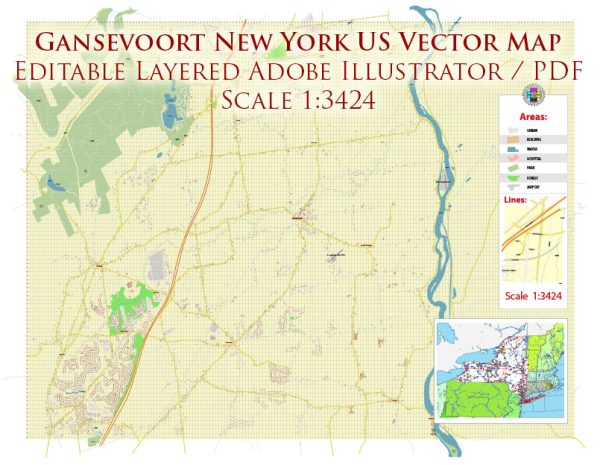Gansevoort is a neighborhood located in the Manhattan borough of New York City, and it has a rich history of urban development that reflects the broader trends in the city’s growth and transformation. The area has undergone significant changes over the years, evolving from a predominantly industrial and commercial district to a vibrant mixed-use neighborhood with a mix of residential, commercial, and cultural spaces.
- Early Industrial Era (19th Century):
- In the 19th century, Gansevoort was primarily an industrial area characterized by warehouses, factories, and meatpacking facilities.
- The neighborhood played a crucial role in the city’s economic development, particularly in the meatpacking industry. The Gansevoort Market, established in the 1880s, was a major hub for meat distribution and processing.
- Economic Shifts and Decline (Mid-20th Century):
- Like many industrial areas in major cities, Gansevoort experienced a decline in the mid-20th century. Changes in the meatpacking industry and economic shifts led to a decrease in industrial activities in the area.
- By the mid-20th century, many of the warehouses and factories had closed down or been repurposed for other uses.
- Revitalization and Transformation (Late 20th Century to Present):
- Starting in the late 20th century, there was a renewed interest in revitalizing urban areas across New York City, and Gansevoort was no exception.
- The High Line, an elevated park built on a former railway track, became a significant catalyst for the neighborhood’s transformation. The park, which opened in 2009, brought increased foot traffic, green space, and cultural amenities to the area.
- Adaptive reuse of historic buildings became a common theme in Gansevoort, with many old warehouses and factories converted into trendy residential lofts, art galleries, and upscale retail spaces.
- Cultural and Commercial Hub:
- Gansevoort is now known for its vibrant atmosphere, attracting a mix of residents, tourists, and businesses.
- The neighborhood is home to a variety of cultural institutions, art galleries, and trendy boutiques. The presence of the Whitney Museum of American Art further solidifies Gansevoort as a cultural hub in Manhattan.
- The Meatpacking District, a part of Gansevoort, has transformed into a fashionable nightlife destination with high-end restaurants, bars, and clubs.
- Architectural Landscape:
- The architectural landscape of Gansevoort reflects a blend of historic structures and modern developments. Historic warehouses with cast-iron facades coexist with sleek contemporary buildings.
- Challenges and Gentrification:
- The neighborhood’s revitalization has also led to concerns about gentrification, as rising property values and rents may displace longtime residents and businesses.
- Balancing the preservation of the neighborhood’s historic character with the demands of modern urban living remains an ongoing challenge.
In summary, Gansevoort’s history of urban development encapsulates the broader narrative of New York City’s evolution from an industrial powerhouse to a diverse, dynamic, and culturally rich urban environment. The interplay of historical preservation, adaptive reuse, and contemporary development has shaped Gansevoort into a unique and thriving neighborhood within the larger context of Manhattan.


 Author: Kirill Shrayber, Ph.D.
Author: Kirill Shrayber, Ph.D.